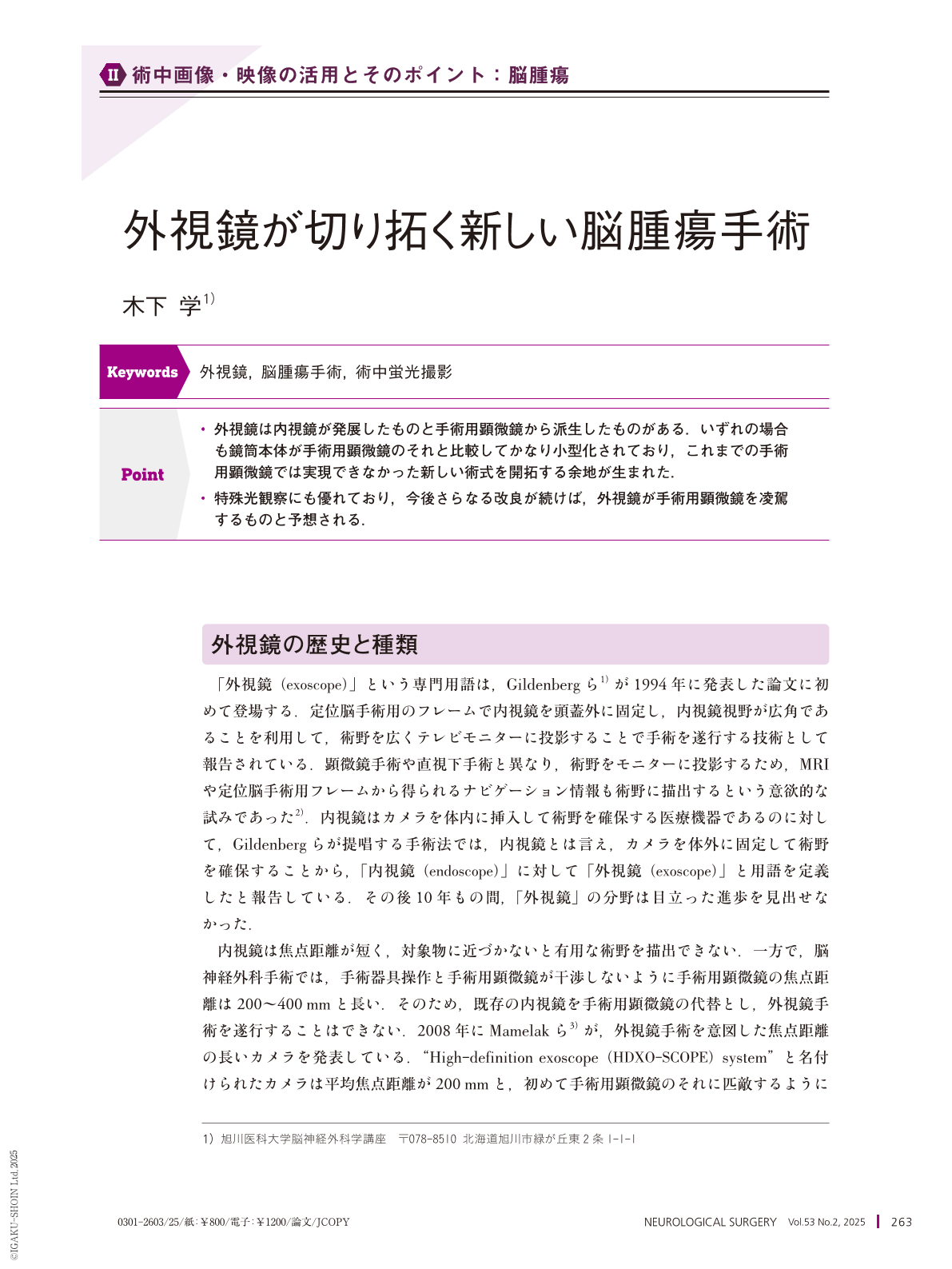Japanese
English
- 有料閲覧
- Abstract 文献概要
- 1ページ目 Look Inside
- 参考文献 Reference
Point
・外視鏡は内視鏡が発展したものと手術用顕微鏡から派生したものがある.いずれの場合も鏡筒本体が手術用顕微鏡のそれと比較してかなり小型化されており,これまでの手術用顕微鏡では実現できなかった新しい術式を開拓する余地が生まれた.
・特殊光観察にも優れており,今後さらなる改良が続けば,外視鏡が手術用顕微鏡を凌駕するものと予想される.
The exoscope, proposed by Gildenberg et al. in 1994, was developed as a new surgical assistive technology that differed from conventional microscopic surgeries. However, no significant progress has been made in this regard over the past decade. In 2008, a high-definition exoscope (HDXO-SCOPE) system developed by Mamelak et al. achieved a focal length of approximately 200 mm with an accuracy comparable to that of an operating microscope. This camera, commercialized as VITOM® (Karl Storz) was smaller than an operating microscope but had a wider field of view. Furthermore, the VITOM® was later adapted to three-dimensional imaging, providing an experience similar to microsurgery. The ORBEYE® (Olympus), on the other hand, was developed as an alternative to the operating microscope and provided a three-dimensional field of view with a focal length of 220 to 550 mm. The most significant advantage of the exoscope is the increased freedom of surgical positioning. Conventional microscopes restrict the surgical approach and surgeons' physical position when conducting surgery, which can be problematic. On the other hand, the exoscope reduces burden on the arms and body and allows for more precise surgery. The exoscope is especially useful in surgeries of posterior cranial fossa, and surgeries on elderly patients. The use of an exoscope also allows greater flexibility when conducting surgery of midbrain lesions. In general, exoscopes are good alternatives to microscopes for brain tumor surgery; however, the current technology should be further improved. Exoscopes are expected to ultimately surpass surgical microscopes in the future leading to their adoption in an increasing number of surgeries.

Copyright © 2025, Igaku-Shoin Ltd. All rights reserved.


